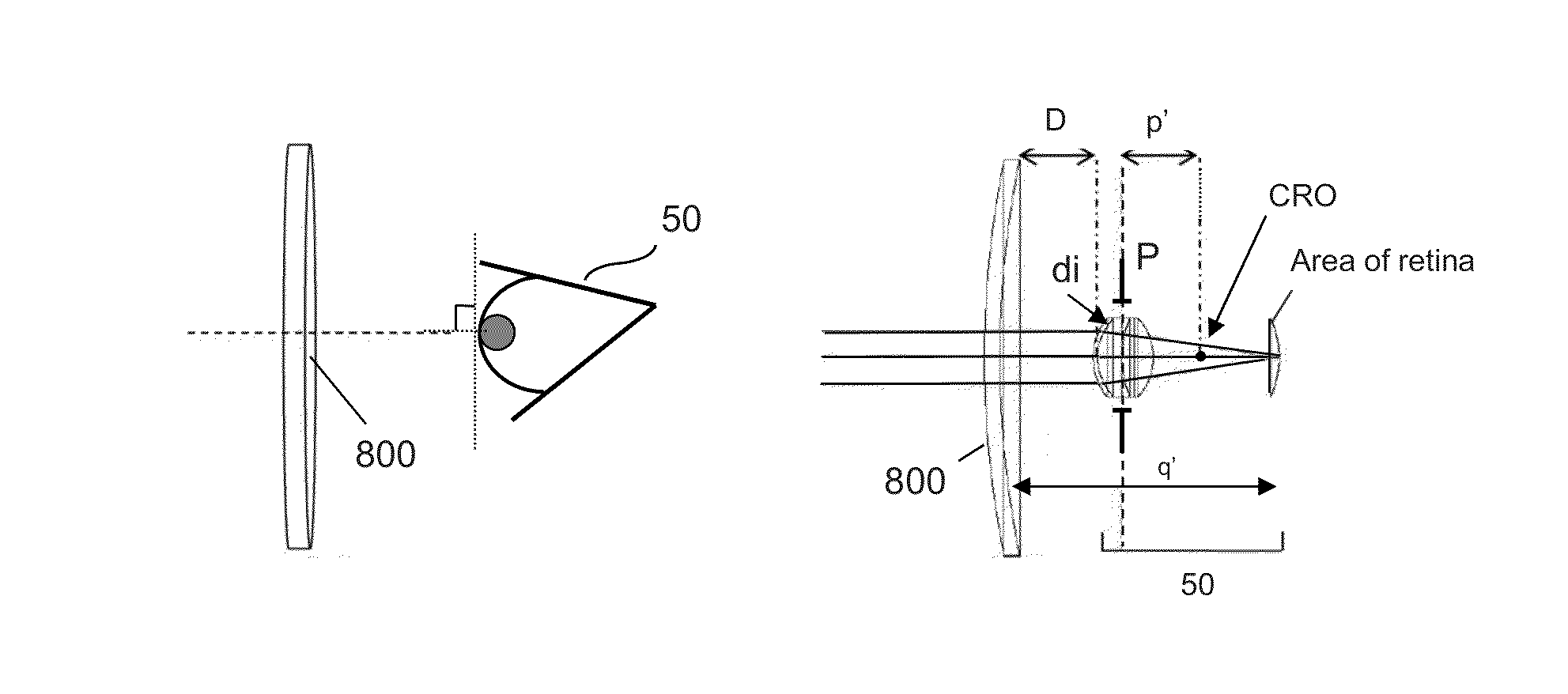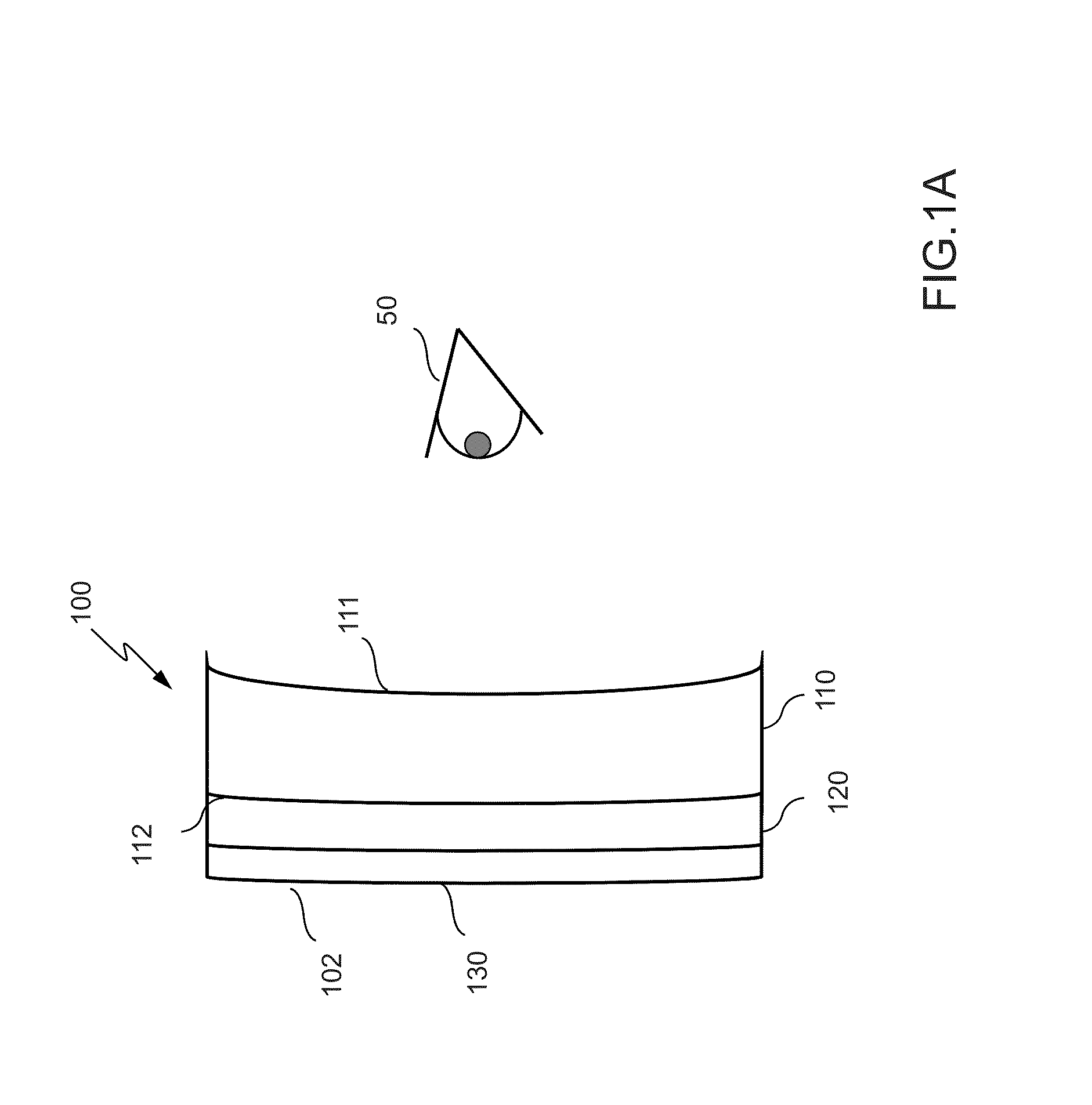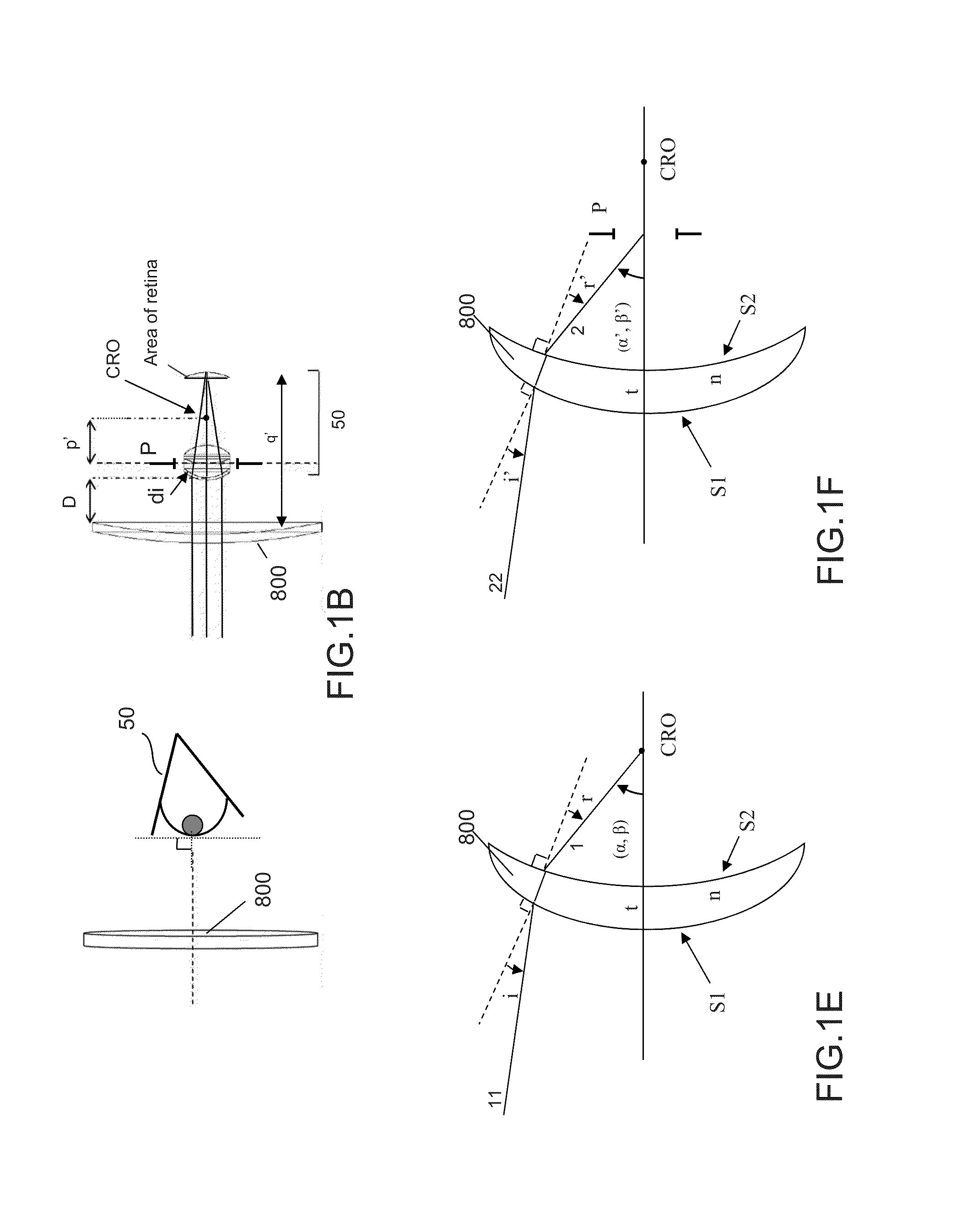Method of determining the configuration of an ophthalmic filter
a technology of ophthalmic filter and configuration, applied in the field of optical devices, can solve problems such as retinal damage or contribution, and achieve the effects of reducing the distortion of colour vision, limiting the perturbation of scotopic vision, and increasing the rejection ra
- Summary
- Abstract
- Description
- Claims
- Application Information
AI Technical Summary
Benefits of technology
Problems solved by technology
Method used
Image
Examples
first embodiment
[0064]An optical device according to the invention will be described with reference to FIG. 1A. FIG. 1A is a schematic diagram of an optical lens 100 comprising a base optical substrate 110 having a first surface 111 and a second surface 112. In the specific embodiment of an optical lens the first surface 111 is a concave back surface, disposed, in use, proximal to an eye 50 of a user and the second surface 112 is a convex front surface disposed, in use, distal to the eye 50 of the user. The optical lens 100 further comprises a selective interferential filter 120 provided, in this particular embodiment, as a layer, on the front surface 112 of the base optical substrate 110 and shaped to conform with the shape of the front surface 112. In other embodiments the selective interferential filter may be provided, as a layer, or as part of a layer, within the optical substrate 110.
[0065]The selective interferential filter 120 operates as a band stop filter selectively inhibiting transmissi...
second embodiment
[0127]The back surface 311 of the optical substrate may be provided with a layer of absorption material 324, similar to the layer of absorptive material of the second embodiment, configured to absorb light in the target bandwidth of the selective interferential filter 322 and / or the selective interferential filter 320. The provision of absorption material 324 in this way significantly reduces the parasitic light that reaches the user's eye, coming from light incident on the back surface 311 of the optical device and reflected by the selective interferential filter 322 and / or the selective interferential filter 320. Moreover, the absorption material 324 enhances the spectral filtering introduced by the selective interferential filter 322 and / or the selective interferential filter 320.
[0128]Like the layer of absorptive material of the previous embodiment, the absorptive layer 324 may also be configured to absorb light in a wavelength band different to the target bandwidth of the selec...
fourth embodiment
[0130]An optical device according to the invention will be described with reference to FIG. 4. FIG. 4 is a schematic diagram of an optical lens 400 comprising a base optical substrate 410 having a first surface 411 and a second surface 412. In the specific embodiment of an optical lens the first surface 411 is a concave back / posterior surface, disposed proximal to an eye 50 of a user in use and the second surface 412 is a convex front / anterior surface disposed in use distal to the eye 50 of the user. The optical lens further comprises an absorptive filter 420 provided, in this embodiment, within the volume of the base optical substrate 410. The absorptive filter 420 in this embodiment is provided as a film containing a dye or pigment and interposed between two layers of the base optical substrate 410. In other embodiments of the invention the absorptive layer may be provided on either surface of the optical substrate.
[0131]The absorptive filter 420 operates as a band stop filter sel...
PUM
 Login to View More
Login to View More Abstract
Description
Claims
Application Information
 Login to View More
Login to View More - R&D
- Intellectual Property
- Life Sciences
- Materials
- Tech Scout
- Unparalleled Data Quality
- Higher Quality Content
- 60% Fewer Hallucinations
Browse by: Latest US Patents, China's latest patents, Technical Efficacy Thesaurus, Application Domain, Technology Topic, Popular Technical Reports.
© 2025 PatSnap. All rights reserved.Legal|Privacy policy|Modern Slavery Act Transparency Statement|Sitemap|About US| Contact US: help@patsnap.com



